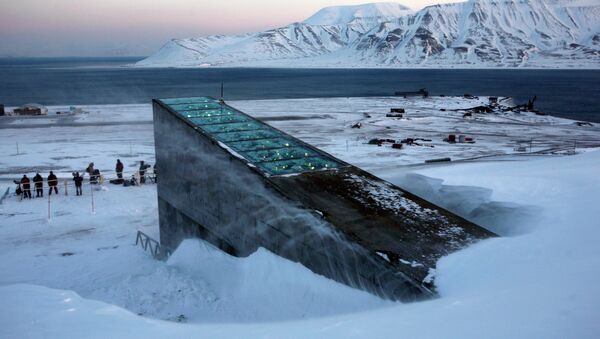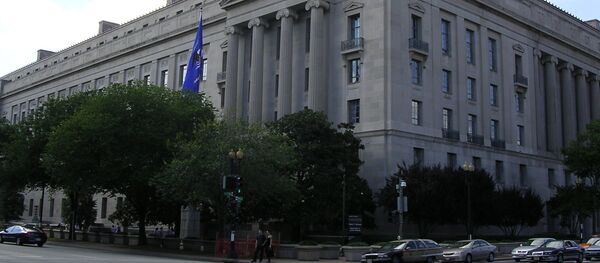According to the Norwegian government, upgrades to the vault will include building a new concrete access tunnel and a service building that can store "emergency power and refrigerating units and other electrical equipment that emits heat through the tunnel," the Verge reported.
The Svalbard Global Seed Vault is a secure seed bank on the Norwegian island of Svalbard. The purpose of the vault, which was built in an abandoned Arctic coal mine, is to preserve a variety of plant seeds from potential large-scale regional or global crises.
If a global natural or manmade disaster, like a nuclear war, was to take place, the Norwegian government would be able to use and distribute seeds protected within the vault to regrow crops and plants. Although the facility is owned and administered by Norway's Ministry of Agriculture and Food, the world community is free to use it, and depositors retain ownership rights over their seeds stored in the facility. The vault can store up to 4.5 million crop varieties. It currently houses more than 890,000 specimens of plant seeds from almost every country in the world.
The facility currently uses special machines to keep the mine at —18 degrees Celsius in order to preserve the seeds there for as long as possible.
"The packages are sealed inside boxes and stored on shelves inside the vault. The low temperature and moisture levels inside the vault ensure low metabolic activity, keeping the seeds viable for long periods of time," writes the website CropTrust, an organization founded in 2004 by the Food and Agriculture Organization of the UN and Biodiversity International.
In a recent statement, Norwegian Minister of Agriculture and Food John George Dale announced that upgrades would soon begin.
"It is a great and important task to safeguard all the genetic material that is crucial to global food safety," Dale wrote in the statement.
"The data I have in my disposal — and I saw all of it myself during a trip to Svalbard — indicates that the depositary is filled to about one-fifth, 20 to 25 percent of its holding capacity," Nikolai Dzyubenko, director of the Nikolai Vavilov All-Russia Institute of Plant Genetic Resources, recently said, according to Russian media.
In 2015, seeds were withdrawn from the Svalbard vault to construct seed banks in Morocco and Lebanon after the region's central seed bank in Aleppo, Syria, was destroyed during the Syrian Civil War.
"The militants pounded Aleppo with bombs and International Center for Agricultural Research in the Dry Areas (ICARDA) staff evacuated a part of the collection to Morocco, but the rest of the collection was replicated and handed to the world depositary for storage," Dzyubenko said. "That's why Syria retrieved 10 percent of what it had deposited, or some 16,000 specimens, that will now be used for further multiplication and studies."
In 2017, around 14,000 packets of grains and legumes seeds regrown in Lebanon and Morocco were re-deposited in the Norwegian vault. This is half the amount of seeds retrieved in 2015.



